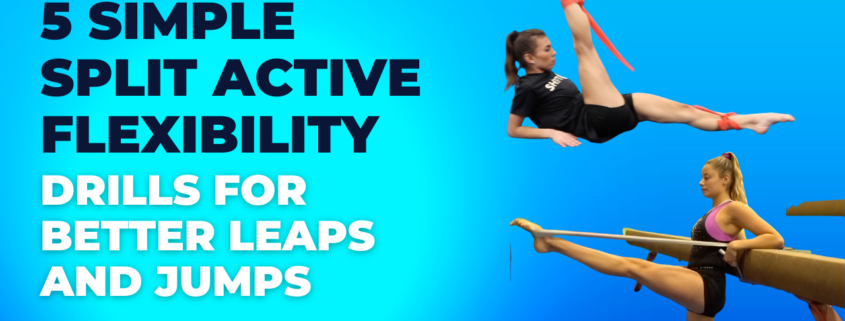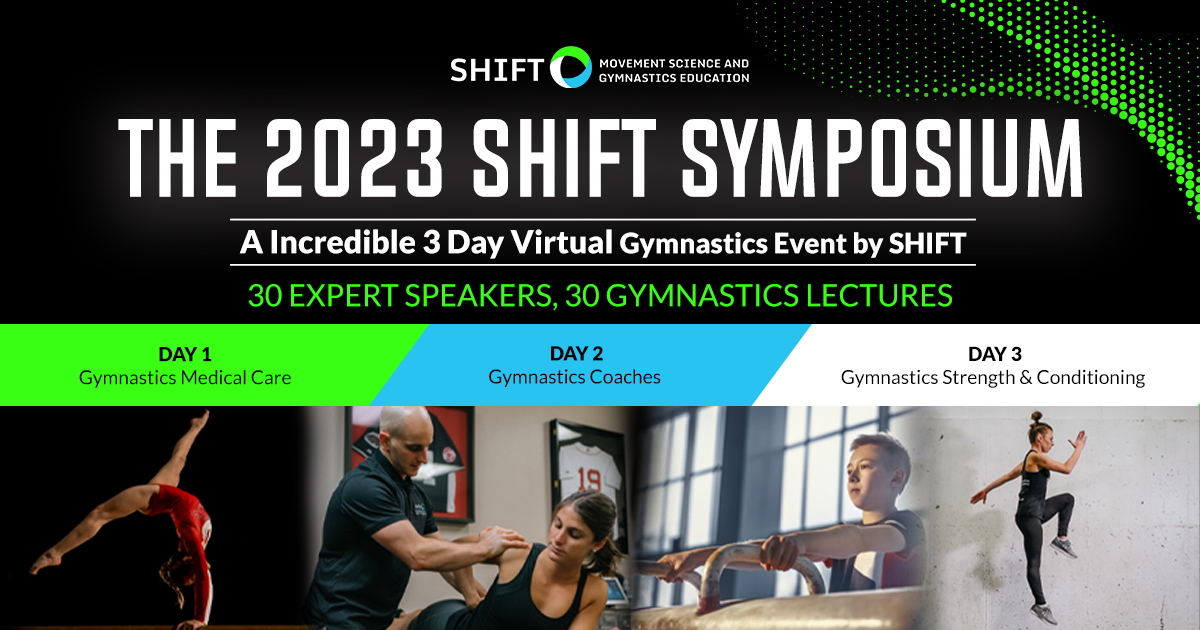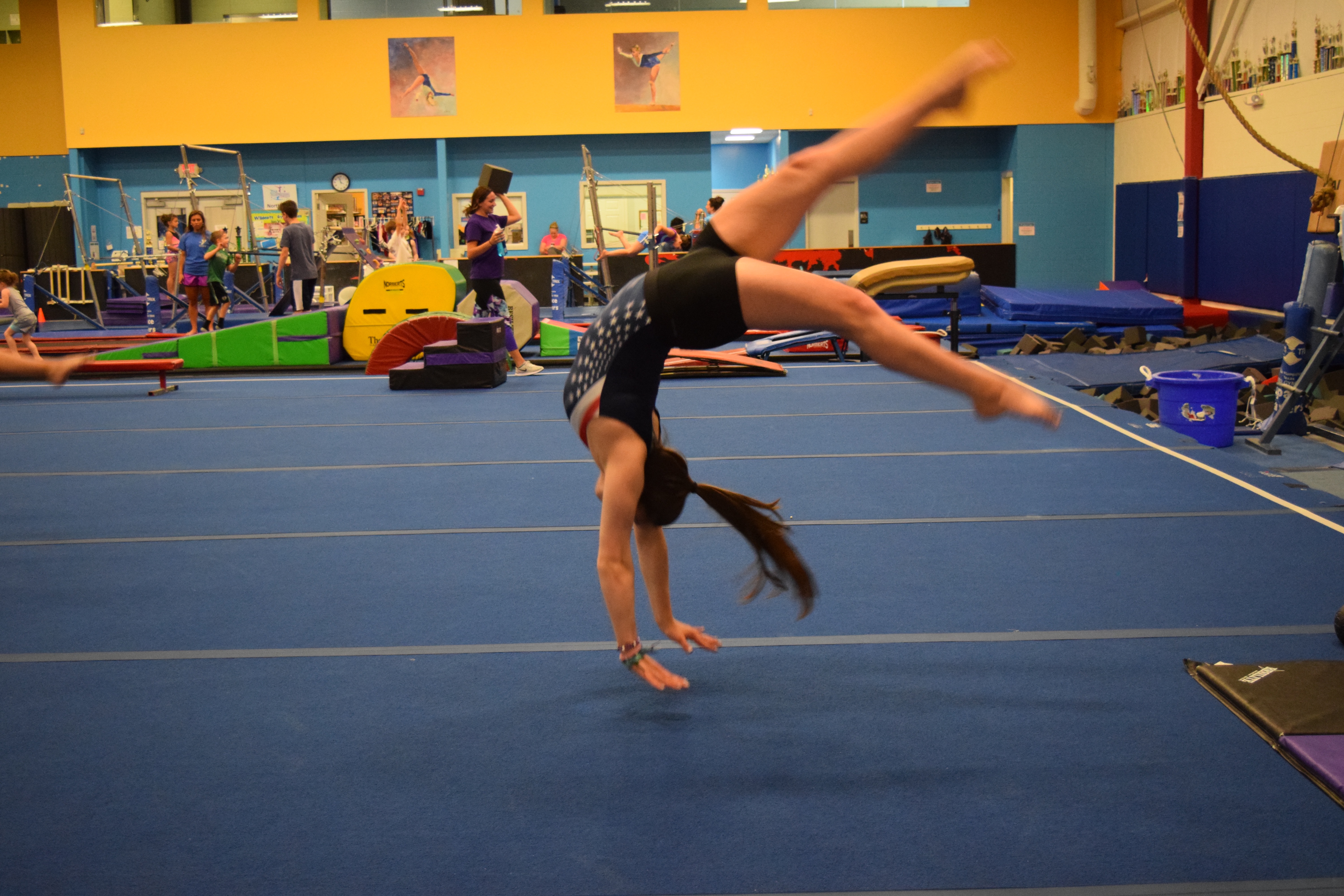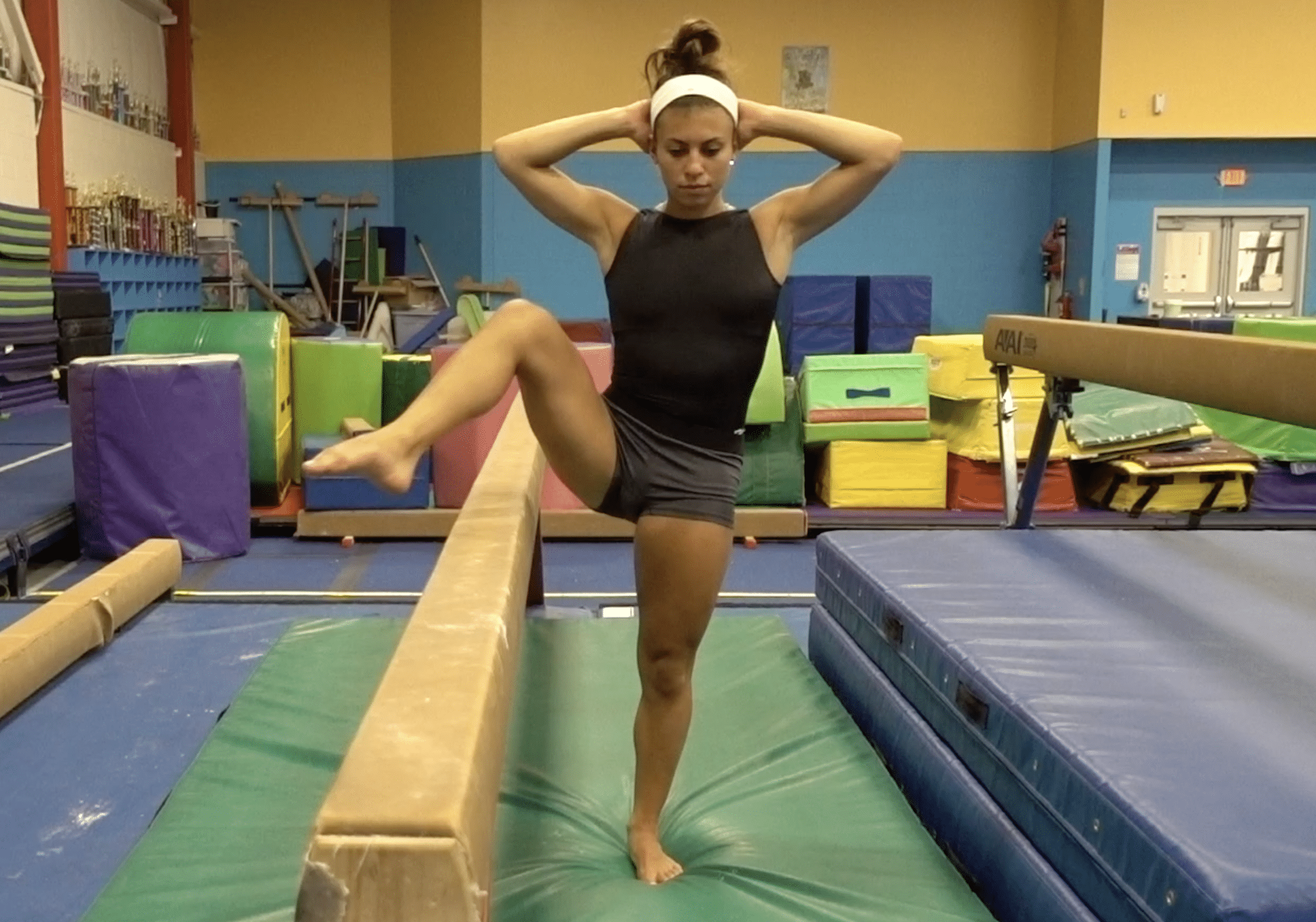5 Simple Split Active Flexibility Drills For Better Leaps and Jumps
Full splits are something many gymnasts and other aesthetic-based sports are trying to achieve. While many people rely on static or dynamic stretching to make changes (which is helpful) the reality is that without any strength or active flexibility drills, those newfound improvements won’t show up in skill. I see so many gymnasts who are frustrated because they are dedicated to daily stretching but still struggle to get good scores or hip their leap/jump angles. In this blog post, I want to share 5 of my favorite active flexibility split drills to help with this.
Before we dive in though, if you are a gymnastics coach working in gymnastics and looking for the best flexibility tips, be sure to sign up for the 2023 SHIFT Symposium where we will have a few incredible lectures on this topic alongside 10 event-specific topics.
But let’s dive in!
Table of Contents
5. Pyramid Leg Lift Progressions
This is by far my favorite drill that I see often underused. I like it because it is easily applied to a large group of athletes, and can be easily scaled based on who is more or less advanced.
To set this up, simply place 3-4 mats of progressively higher height next to each other in front of a beam or wall. Then, have athletes stand with their back or side flat against that surface based on what variation you are working. Cue the athlete to keep their hips square, lift their leg above the next block height, hold for 2 seconds, lower their leg, then move their body down.
4. Curled Up Hip Lifts
While the front leg of splits/jumps usually gets the most attention, the back leg is most commonly the source of deductions or form errors. This is often because gymnasts either lack back leg hip/flexor quad mobility, or the lack strength to actually get their lift to a fully flat 180 angle.
For the first issue, regular foam rolling, quad stretching, and eccentric split squats are my favorite approach. If you want specific circuits for this, check out our free resource library to download a useful PDF!
For those who have decent passive flexibility of the back leg but struggle with hamstring/glute strength, I love this simple curled-up hip lift exercise.
To do this, simply have the athlete kneel on the edge of a block and fully curl up into a ball. Then, drop one leg back off the block. From here, while keeping the core braced, the athlete will then raise their back leg up as far as they can using their glute and hamstring muscles but not allowing their chest to rise. This position really forces the hip muscles to do all the work, instead of the lower back arching/compensating.
This can also be done in a straddle type motion.
A few sets of 10 is a great place to start, and if the athlete struggles they can bend their back leg.
3. Reptile Slides
Continuing on the idea of straddle/pancake type active flexibility, reptile slides are another one of my go to drills. It again tries to force the athlete to use their glutes and deep hip rotator muscles for the work instead of using momentum or compensation.
For this, have the athlete lay on their stomach with their hands under their head. Keeping the core braced and hips as square as possible facing the floor, instruct the athlete to bring their knee up to try and touch the same side elbow.
To make these easier, try adding a slider under the gymnast’s knee to help. To make these harder, just straighten the leg out.
2. Standing Hip Circles
To combine many of the drills above, and develop overall hip strength in gymnastics-specific ways, standing hip circles can be super effective.
Have a gymnast stand facing towards or next to a balance beam that is just below hip height, depending on if you want to work forward or straddling motions.
With the hands on the head and hips square, have the athlete slowly raise their leg up, move it over the beam, open their hip as much as possible, and then return to the start position.
1. Tumbl Trak/Trampoline Jumps & Banded Kicks
Had to do a little two-for-one bonus at the end here, as both of these drills are my all-time favorites for working full split/straddle jumps in gymnastics-specific ways.
For the first exercise, use a trampoline or Tumbl Trak. Have the athlete repeat a series of jump, jump, split leap right then jump, jump, split leap left, then jump, jump straddle. In this case, we are trying to maximize jump height so that the athlete can snap into the full 180 positions they have been building strength to achieve.
Conclusion
From here, it’s all about technique, drills, and drilling those basics! You can add these in as side stations on events, or to a warm-up, or as a separate circuit on lighter practice days.
Remember, if this information was interesting and you want to learn more be sure to sign up for the 2023 SHIFT Symposium where we will have 30+ gymnastics lectures from 30 speakers over 3 days for the most cutting-edge techniques!
Hope this was helpful,
– Dave
Dr. Dave Tilley DPT, SCS
CEO/Founder of SHIFT










